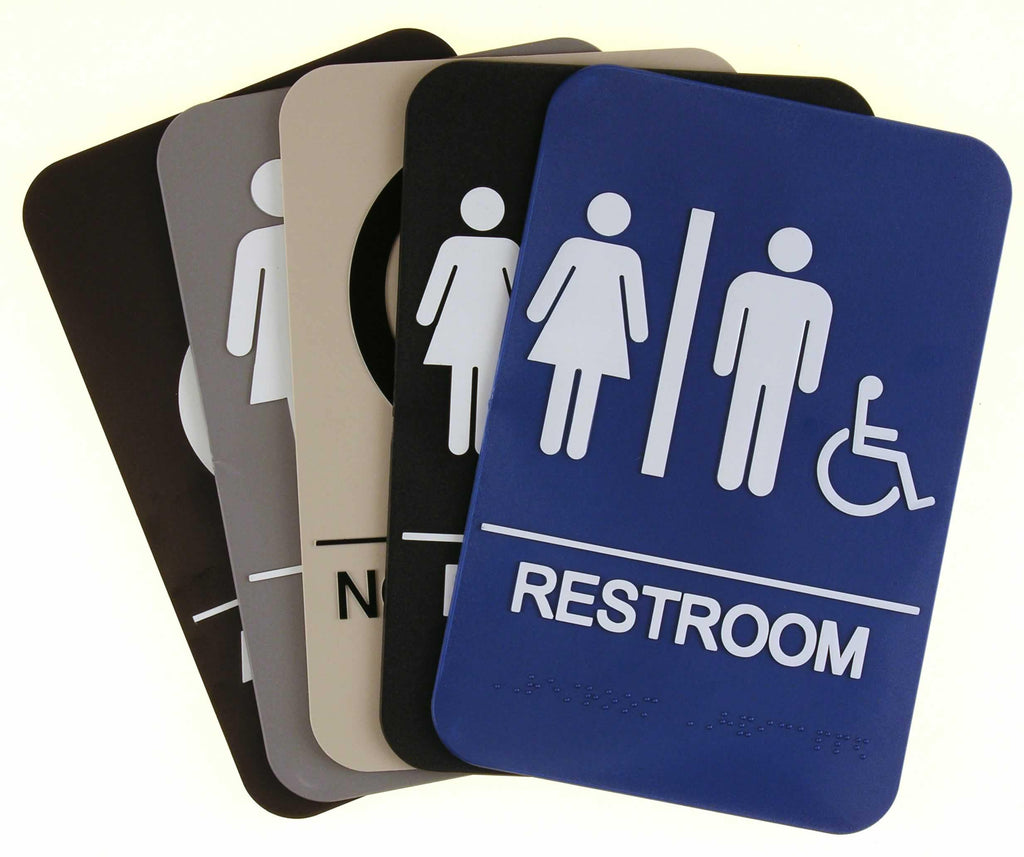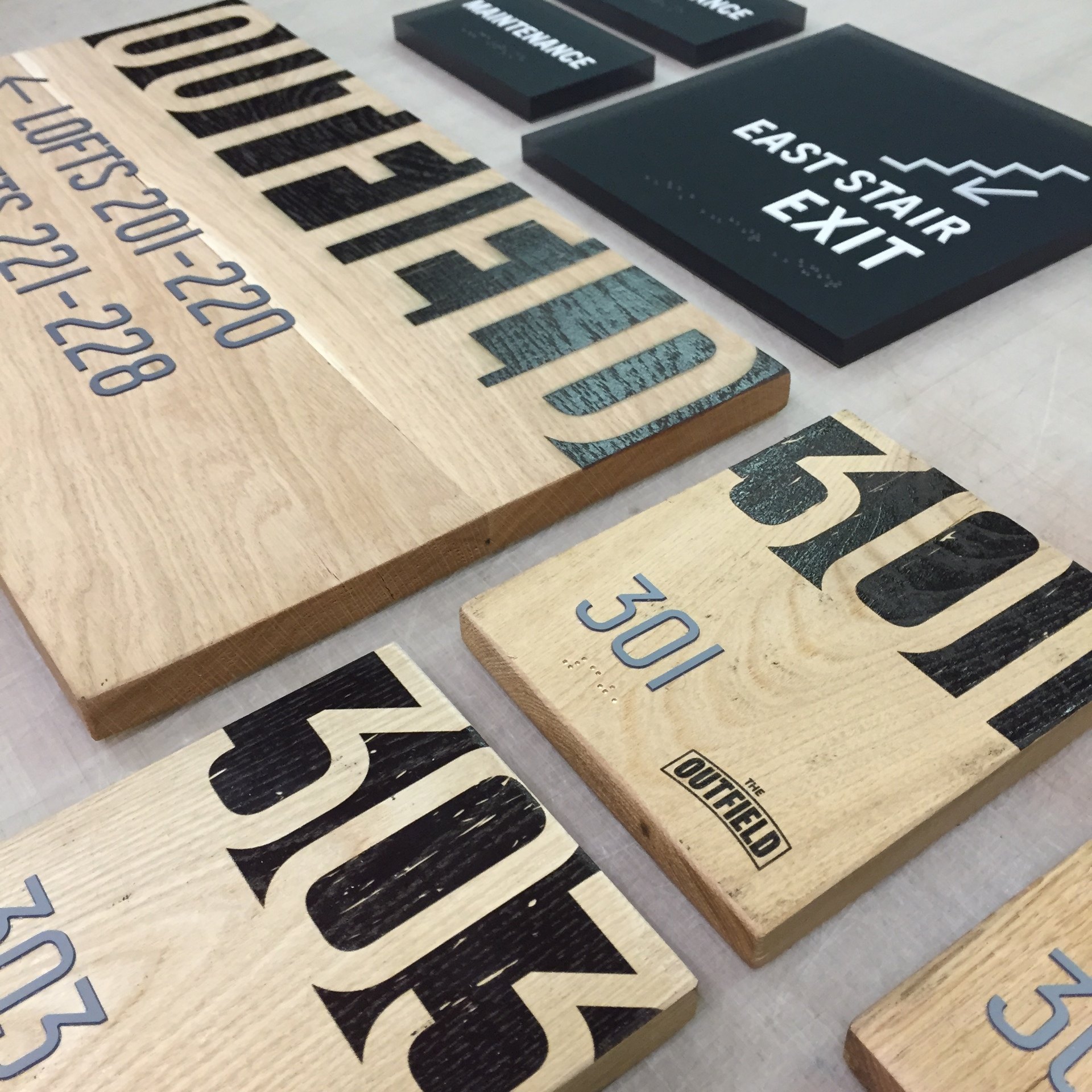Exploring the Secret Attributes of ADA Indications for Boosted Accessibility
In the world of availability, ADA signs work as quiet yet powerful allies, ensuring that rooms are inclusive and accessible for people with disabilities. By incorporating Braille and responsive components, these signs damage obstacles for the visually damaged, while high-contrast color pattern and clear fonts satisfy varied visual demands. In addition, their critical placement is not arbitrary yet instead a computed initiative to help with smooth navigation. Past these features exists a deeper story about the advancement of inclusivity and the ongoing dedication to creating equitable rooms. What much more could these signs indicate in our pursuit of global availability?
Significance of ADA Conformity
Ensuring compliance with the Americans with Disabilities Act (ADA) is essential for cultivating inclusivity and equivalent access in public areas and offices. The ADA, established in 1990, mandates that all public facilities, employers, and transportation solutions suit people with disabilities, ensuring they take pleasure in the very same rights and opportunities as others. Compliance with ADA requirements not just meets legal obligations however additionally boosts a company's reputation by demonstrating its commitment to variety and inclusivity.
One of the vital facets of ADA conformity is the application of obtainable signs. ADA indications are made to make sure that individuals with disabilities can conveniently browse with areas and buildings.
Furthermore, adhering to ADA laws can alleviate the risk of prospective fines and lawful repercussions. Organizations that fall short to abide by ADA standards may face fines or claims, which can be both financially difficult and damaging to their public picture. Hence, ADA compliance is indispensable to promoting a fair environment for every person.
Braille and Tactile Aspects
The incorporation of Braille and tactile components into ADA signs embodies the principles of accessibility and inclusivity. These functions are crucial for individuals that are aesthetically damaged or blind, enabling them to navigate public rooms with greater self-reliance and self-confidence. Braille, a tactile writing system, is vital in giving written info in a layout that can be easily viewed with touch. It is commonly placed underneath the equivalent message on signage to guarantee that people can access the details without aesthetic support.
Responsive aspects prolong beyond Braille and include raised icons and personalities. These elements are developed to be discernible by touch, allowing people to recognize space numbers, bathrooms, departures, and other crucial areas. The ADA establishes specific standards pertaining to the dimension, spacing, and placement of these tactile components to enhance readability and guarantee consistency throughout different environments.

High-Contrast Color Design
High-contrast color pattern play a pivotal duty in improving the visibility and readability of ADA signs for people with visual impairments. These plans are vital as they optimize the difference in light reflectance in between text and history, ensuring that indicators are easily noticeable, even from a distance. The Americans with Disabilities Act (ADA) mandates using certain shade contrasts to fit those with minimal vision, making it a critical aspect of conformity.
The efficacy of high-contrast colors hinges on their ability to attract attention in various lights conditions, including poorly lit environments and areas with glow. Generally, dark message on a light background or light text on a dark history is employed to achieve ideal comparison. Black text on a yellow or white history provides a plain aesthetic distinction that assists in quick recognition and comprehension.

Legible Fonts and Text Dimension
When considering the design of ADA signage, the option of readable font styles and ideal message dimension can not be overemphasized. These elements are essential for making sure that indications are obtainable to people with aesthetic problems. The Americans with Disabilities Act (ADA) mandates that typefaces have to be not italic and sans-serif, oblique, manuscript, very attractive, or of uncommon kind. These needs aid make certain that the message is conveniently legible from a range which the personalities are appreciable to diverse audiences.
According to ADA guidelines, the minimal my review here text elevation ought to be 5/8 inch, and it needs to boost proportionally with viewing range. Uniformity in message dimension adds to a natural aesthetic experience, aiding individuals in browsing atmospheres efficiently.
Additionally, spacing in between letters and lines is integral to clarity. Sufficient spacing protects against characters from showing up crowded, enhancing readability. By sticking to these criteria, designers can considerably boost ease of access, making certain that signage offers its intended function for all people, no matter their visual capacities.
Effective Placement Approaches
Strategic placement of ADA signs is important for optimizing access and ensuring compliance with lawful criteria. ADA standards state that indications must be installed at a height between 48 to 60 inches from the ground to guarantee they are within the line of view for both standing and seated individuals.
Additionally, signs should be put nearby to the latch side of doors to enable easy recognition before entrance. Consistency in indicator placement throughout a center check my blog enhances predictability, lowering confusion and boosting overall user experience.

Final Thought
ADA signs play a vital function in advertising ease of access by incorporating features that deal with the demands of individuals with impairments. Including Braille and tactile aspects makes certain crucial info is accessible to the visually damaged, while high-contrast color schemes and clear sans-serif font styles boost presence across various illumination problems. Reliable positioning strategies, such as suitable installing heights and calculated places, additionally promote navigating. These components collectively promote an inclusive atmosphere, highlighting the value of ADA conformity in making sure equivalent accessibility for all.
In the world of access, ADA indications serve as silent yet effective allies, making certain that rooms are accessible and inclusive for individuals with impairments. The ADA, passed in 1990, mandates that all public facilities, companies, and transportation services suit individuals Continued with handicaps, guaranteeing they take pleasure in the same civil liberties and possibilities as others. ADA Signs. ADA indications are designed to ensure that individuals with disabilities can conveniently browse through structures and areas. ADA guidelines stipulate that indications ought to be placed at a height between 48 to 60 inches from the ground to guarantee they are within the line of sight for both standing and seated people.ADA signs play an essential function in advertising availability by integrating functions that address the demands of individuals with specials needs
Comments on “Just How ADA Signs Boost Accessibility for Everyone”